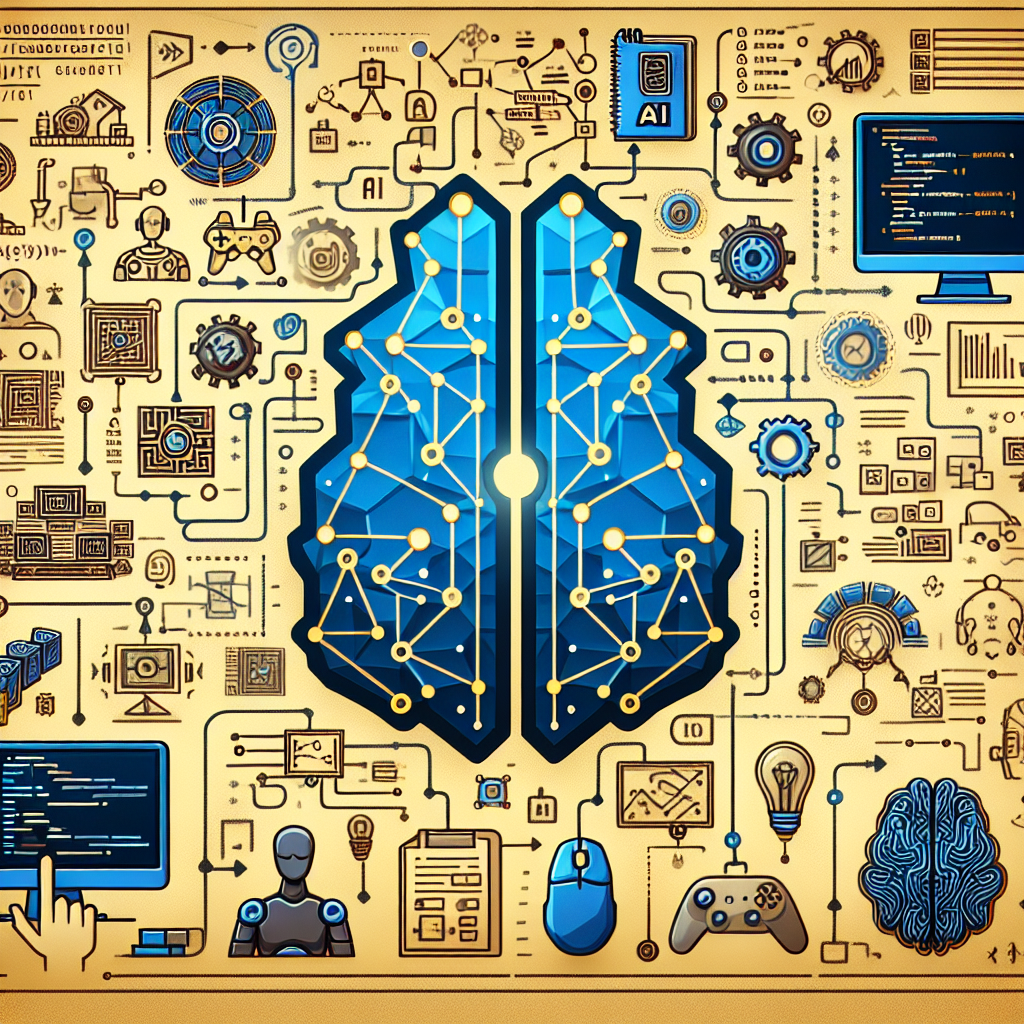AI-Driven Game Level Design and Creation
Artificial Intelligence (AI) has rapidly transformed various industries, including the gaming industry. One of the most fascinating applications of AI in gaming is in the area of game level design and creation. AI-driven tools and algorithms have revolutionized the way game developers design levels, creating more dynamic and engaging gaming experiences for players.
AI-driven game level design and creation involve the use of machine learning algorithms and neural networks to generate game levels that are tailored to individual player preferences, skill levels, and playing styles. These AI-powered tools can analyze player behavior, in-game data, and other factors to create levels that are challenging yet enjoyable for players.
The Benefits of AI-Driven Game Level Design and Creation
There are several benefits to using AI-driven tools for game level design and creation:
1. Procedural Generation: AI can generate game levels procedurally, meaning that levels are created algorithmically rather than manually by developers. This allows for the creation of virtually infinite levels, providing players with a constantly evolving gaming experience.
2. Personalization: AI can analyze player data and preferences to create levels that are tailored to individual players. This personalization enhances player engagement and satisfaction, leading to a more immersive gaming experience.
3. Dynamic Difficulty Adjustment: AI can dynamically adjust the difficulty of game levels based on player performance. This ensures that players are constantly challenged without becoming frustrated, leading to a more balanced and enjoyable gaming experience.
4. Time and Cost Savings: AI-driven tools can significantly reduce the time and cost associated with level design and creation. Developers can use AI to generate levels quickly and efficiently, allowing them to focus on other aspects of game development.
5. Creativity: AI can generate unique and innovative game levels that may not have been possible through traditional methods. This creativity can lead to more engaging and memorable gaming experiences for players.
AI-Driven Tools for Game Level Design and Creation
There are several AI-driven tools and algorithms that game developers can use for level design and creation:
1. Procedural Content Generation (PCG): PCG algorithms use machine learning techniques to generate game levels, characters, and other content. These algorithms can create levels that are tailored to player preferences and playing styles, leading to a more personalized gaming experience.
2. Neural Networks: Neural networks can analyze player data and in-game behavior to create levels that are challenging yet enjoyable for players. These networks can learn from player interactions and adapt levels accordingly, providing a dynamic and engaging gaming experience.
3. Genetic Algorithms: Genetic algorithms use evolutionary principles to generate game levels. These algorithms can create levels that evolve over time, adapting to player preferences and skill levels. This dynamic approach to level design can lead to more engaging and immersive gaming experiences.
4. Reinforcement Learning: Reinforcement learning algorithms can optimize game levels based on player feedback and performance. These algorithms can adjust the difficulty of levels in real-time, ensuring that players are constantly challenged and engaged.
FAQs
Q: How does AI analyze player data to create personalized game levels?
A: AI-driven tools can analyze player behavior, in-game data, and other factors to create levels that are tailored to individual player preferences. These tools can track player interactions, playing styles, and skill levels to generate levels that are challenging yet enjoyable for players.
Q: How can AI dynamically adjust the difficulty of game levels?
A: AI can dynamically adjust the difficulty of game levels based on player performance. By analyzing player data and feedback, AI-driven tools can alter the complexity of levels in real-time, ensuring that players are constantly challenged without becoming frustrated.
Q: Can AI-driven tools create unique and innovative game levels?
A: Yes, AI-driven tools can generate unique and innovative game levels that may not have been possible through traditional methods. These tools can use machine learning algorithms and neural networks to create levels that are creative, engaging, and memorable for players.
Q: How can AI-driven tools save time and cost in game development?
A: AI-driven tools can significantly reduce the time and cost associated with level design and creation. By automating the process of generating levels, developers can create content more quickly and efficiently, allowing them to focus on other aspects of game development.
In conclusion, AI-driven game level design and creation have revolutionized the gaming industry, providing developers with powerful tools to create dynamic and engaging gaming experiences. By leveraging AI algorithms and machine learning techniques, developers can generate personalized, challenging, and innovative game levels that enhance player engagement and satisfaction. As AI continues to advance, we can expect even more exciting developments in the field of game level design and creation, leading to a new era of immersive and interactive gaming experiences.

